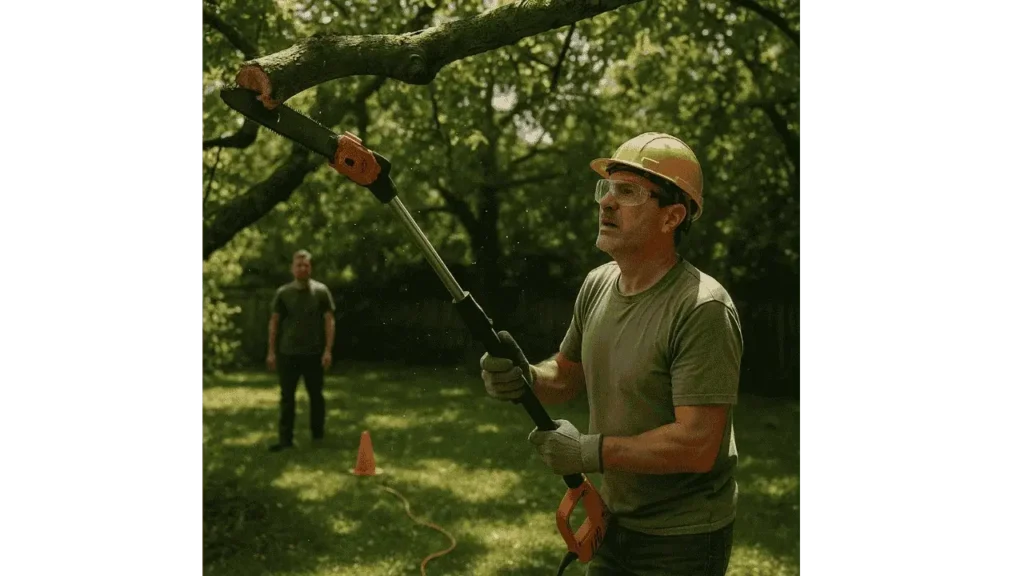Having used pole saws for over a decade in both residential and forestry settings, I can say they’re a tool that demands respect but offers tremendous safety advantages when handled right. While risks do exist, especially with overhead cutting, the ability to prune high branches from the ground without ladders already eliminates some of the most common causes of tree-trimming injuries. It’s not the tool itself that’s dangerous, it’s improper technique, poor positioning, and lack of awareness that often cause problems.
“Most injuries from pole saws occur not because the tool is inherently unsafe, but because users don’t respect the physics of overhead cutting,”
says Dr. Leon Meyers, Certified Arborist and Safety Consultant at TreeTech USA.

Common Injury Risks from Pole Saw Use
Falling Branches
Branches may fall unpredictably and strike the user, especially if cut directly overhead. Even experienced users can misjudge how limbs will fall, making protective gear and cutting angles critical.
Kickback Hazards
Sudden jerks or rebounds can occur when the chain tip strikes a hard section of wood, potentially causing the pole to whip or the user to lose balance. Chain tension and positioning must be monitored constantly.
Muscle and Joint Strain
Holding a pole saw overhead for extended periods puts strain on shoulders, neck, and wrists. Frequent breaks, correct posture, and switching arms can help reduce fatigue and prevent long-term strain.
Electrical Hazards (Electric Pole Saws)
Electric pole saws can become dangerous near live wires. Contact with power lines poses a risk of electrocution and should always be avoided by maintaining a safe distance.
What Incidents Can Pole Saws Help Prevent?
Ladder Falls While Pruning Trees
Using pole saws removes the need to climb, drastically reducing fall-related injuries. Many chainsaw accidents involve ladders, pole saws change that by keeping the operator on the ground.
“Compared to climbing with a chainsaw or rope saw, a well-used pole saw is dramatically safer, provided the operator wears proper gear and stays alert,”
notes Karen Holtz, Forestry Tools Educator at the Pacific Arbor Safety Council.
Struck-by Injuries from Standing Directly Under Branches
Pole saws encourage angled, lateral cutting instead of standing directly under branches. This improves control and significantly reduces the risk of limbs falling onto the user.
Safer Than What? Comparing to Other Tools
vs. Chainsaws on Ladders
Chainsaws deliver power but become highly dangerous when operated above shoulder level or while climbing. One slip can lead to severe injury.
vs. Manual Saws in Trees
Manual pruning often requires climbing, which adds instability and limits mobility. Pole saws give safer access to high branches with greater reach and leverage.
vs. Climbing with Rope Saws
While rope saws may seem handy, they require climbing or height positioning, leaving little room for quick reactions. Pole saws allow for precision from the ground with minimal setup.
Final Takeaways
Pole saws can be dangerous if misused, but when operated with care and proper gear, they offer a significantly safer alternative to climbing with chainsaws or rope tools. By understanding how the tool behaves and working from a grounded position, users can reduce injury risks while maintaining trees efficiently and safely.
- How to Cut a Straight Line with a Jigsaw? - October 31, 2025
- How to Cut a Circle with a Jigsaw? - October 31, 2025
- Can You Cut Acrylic with a Jigsaw? - October 31, 2025
